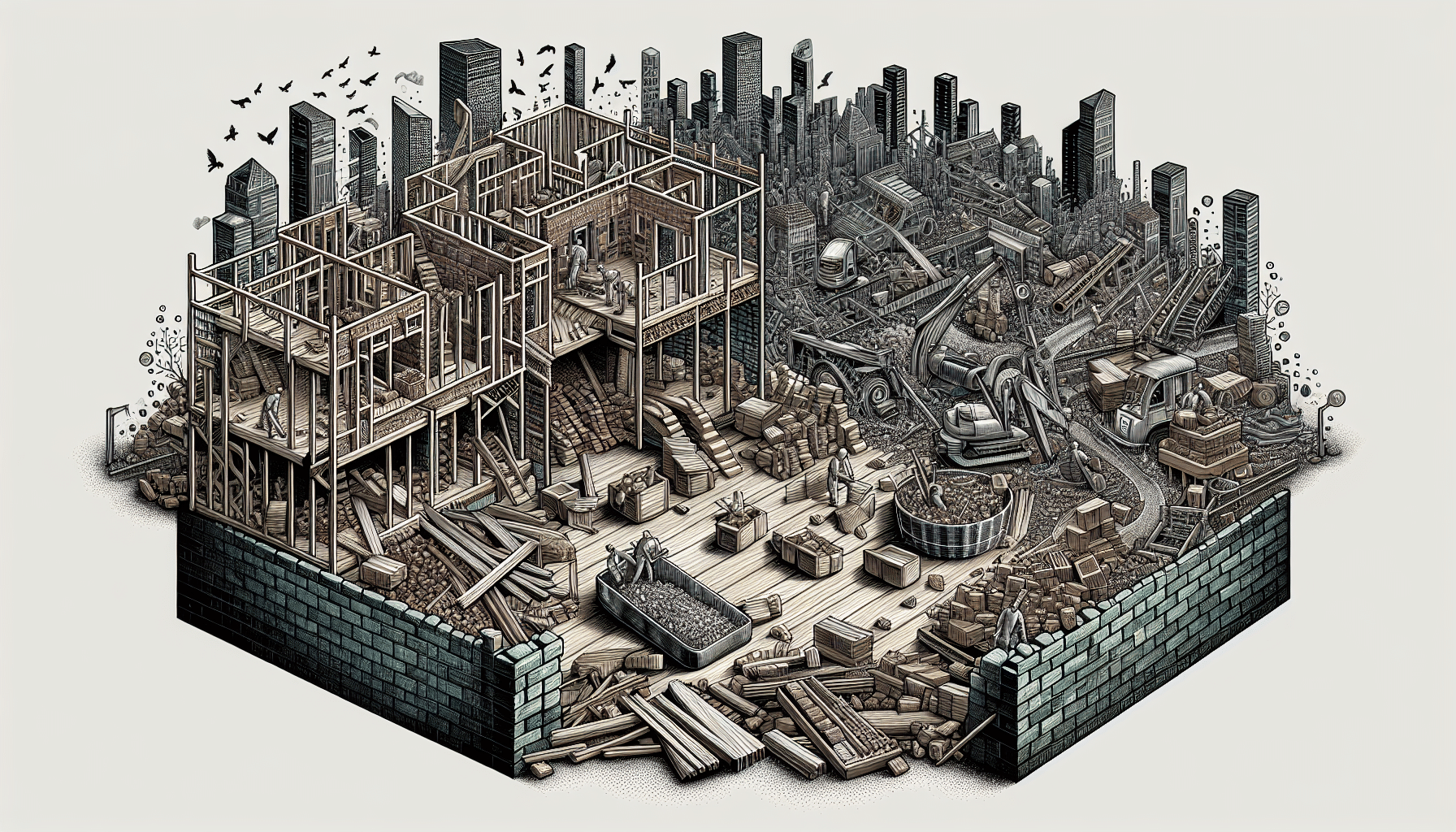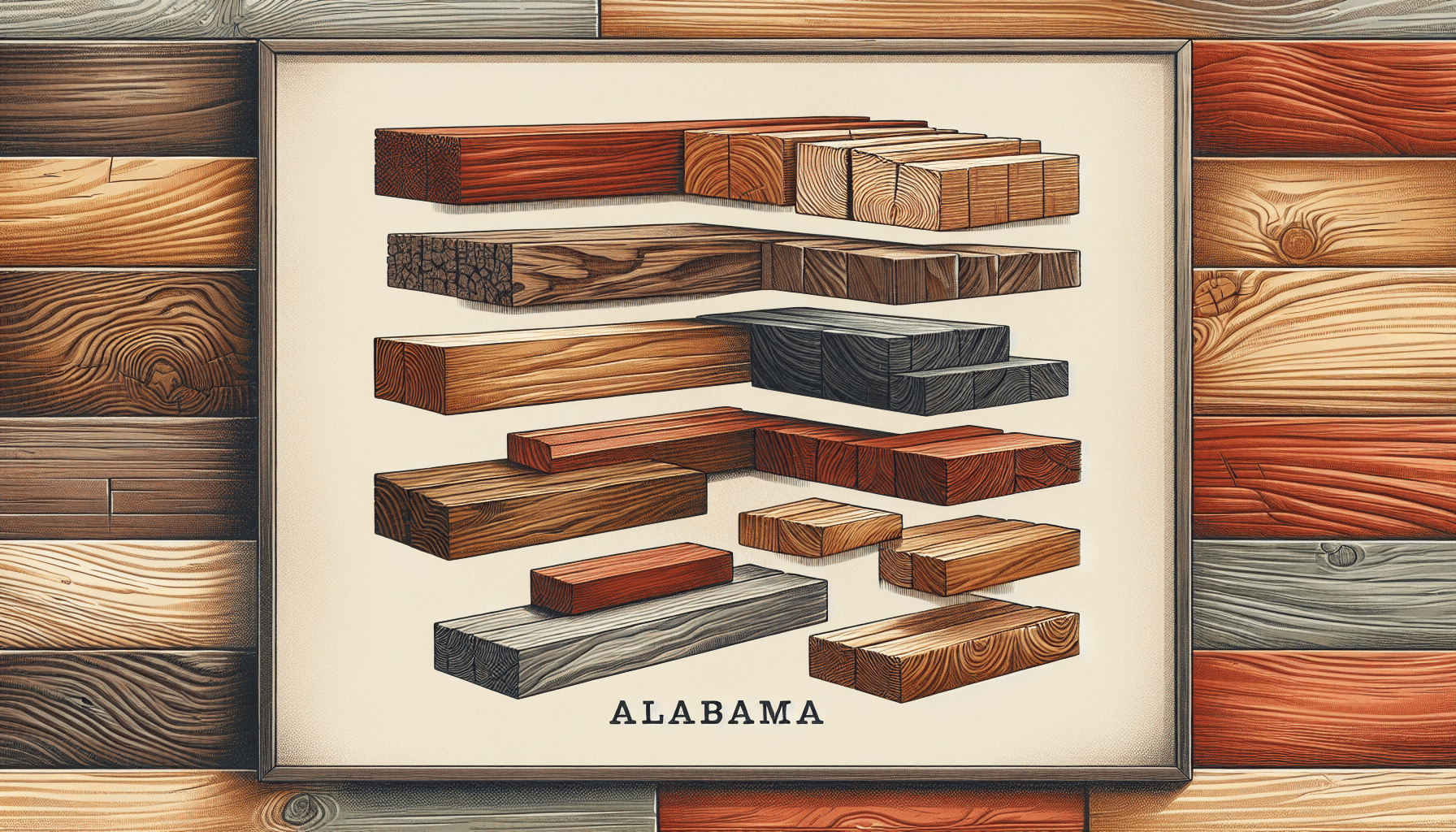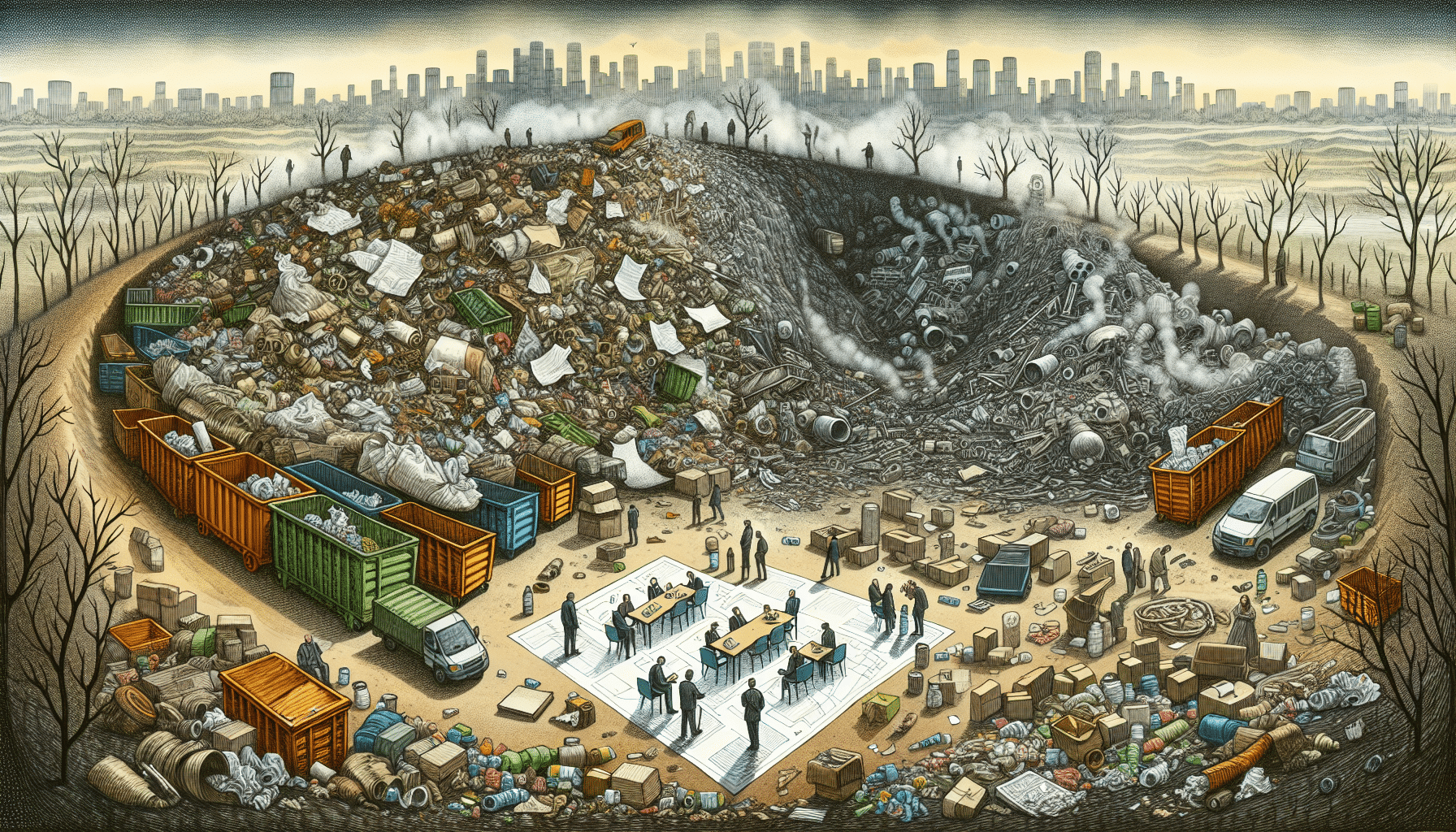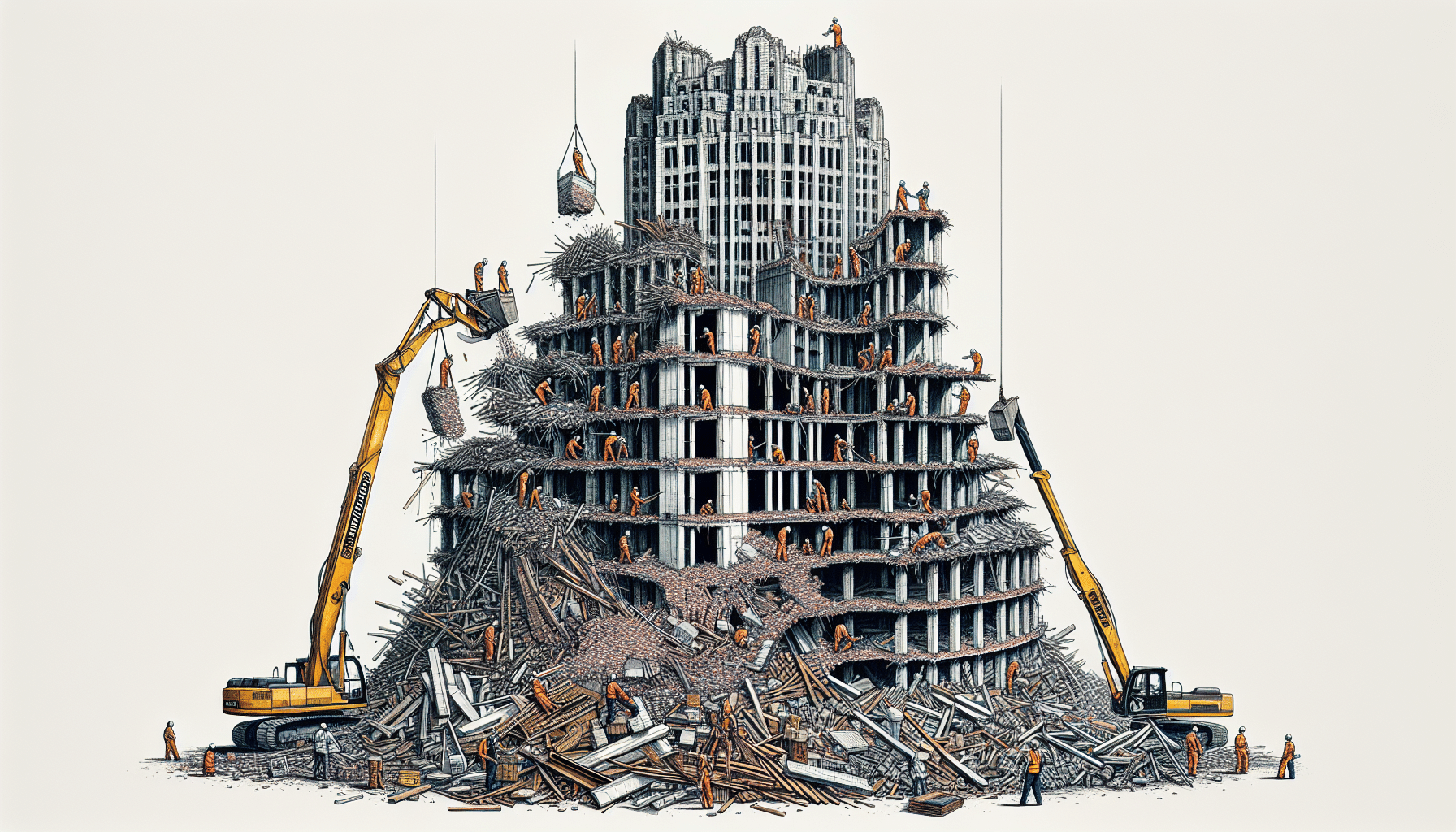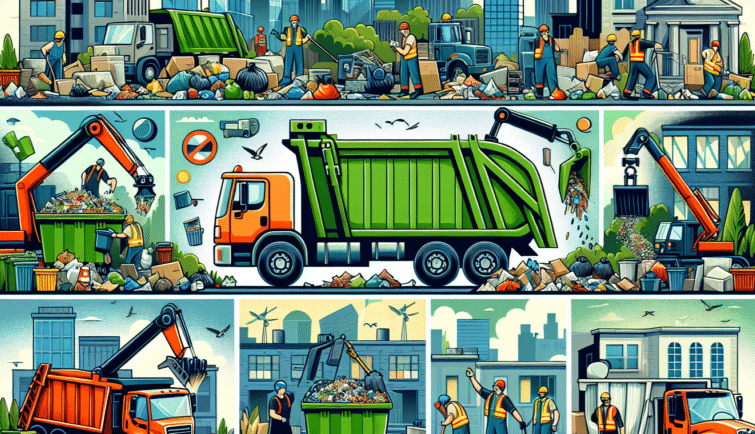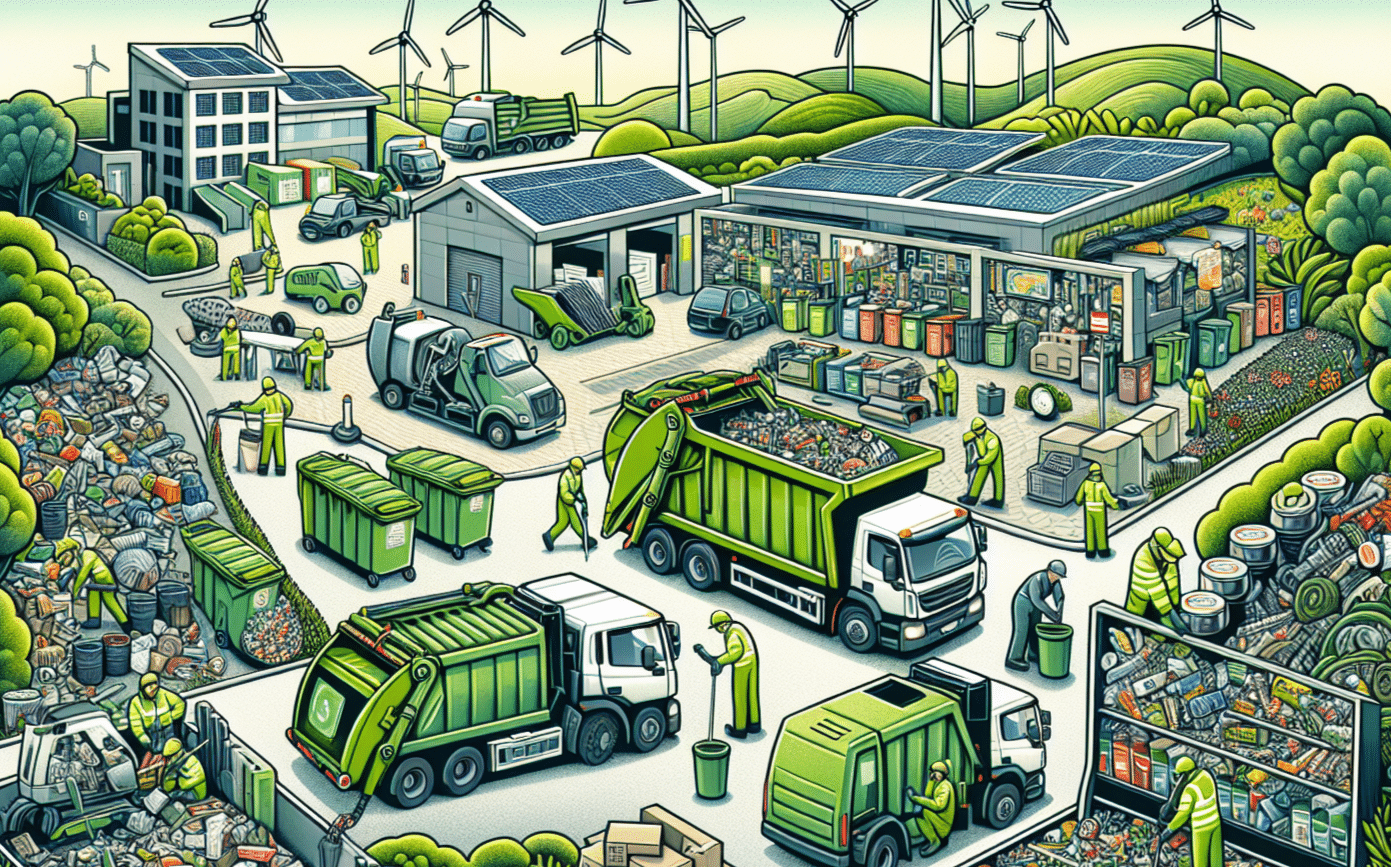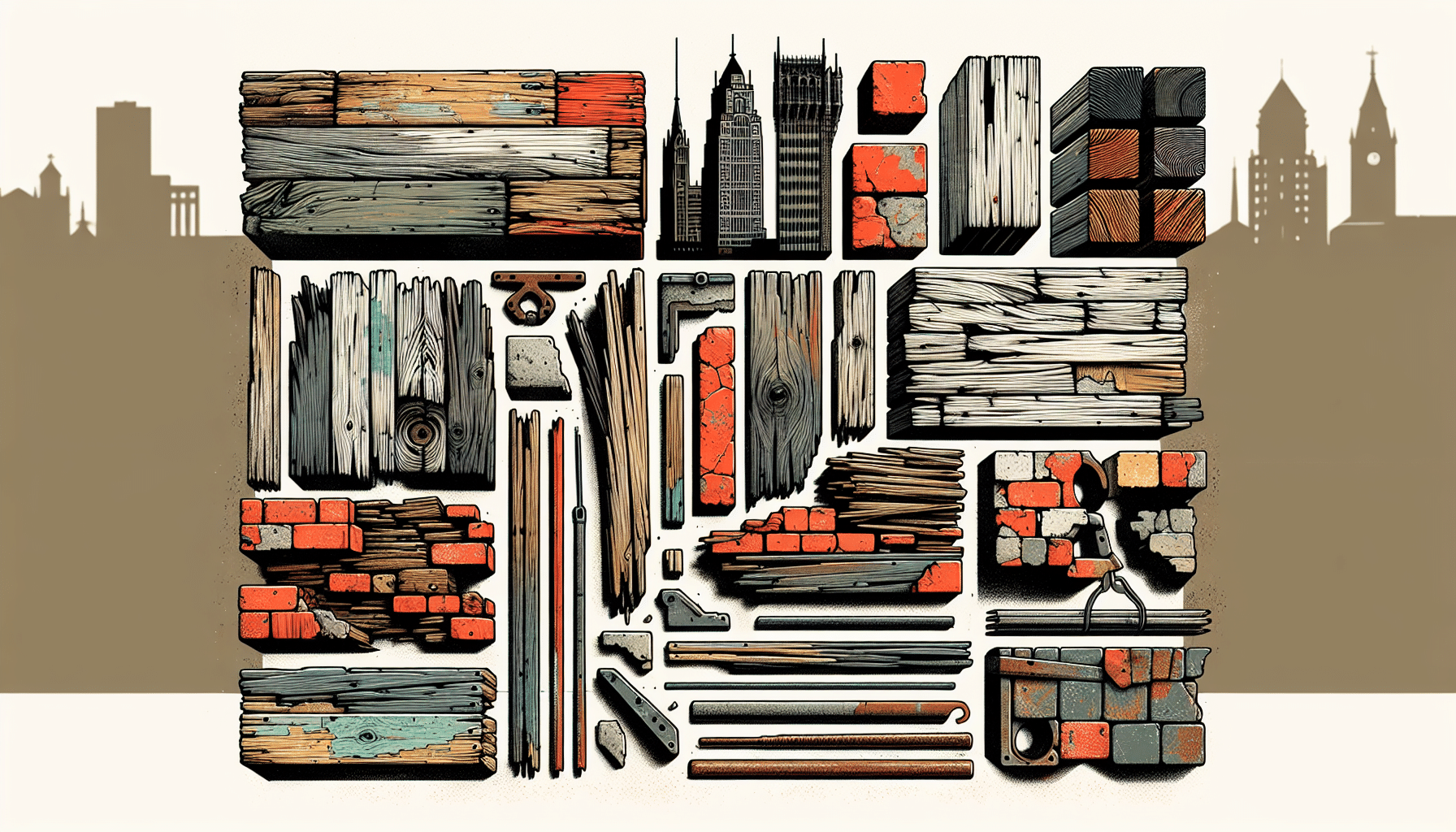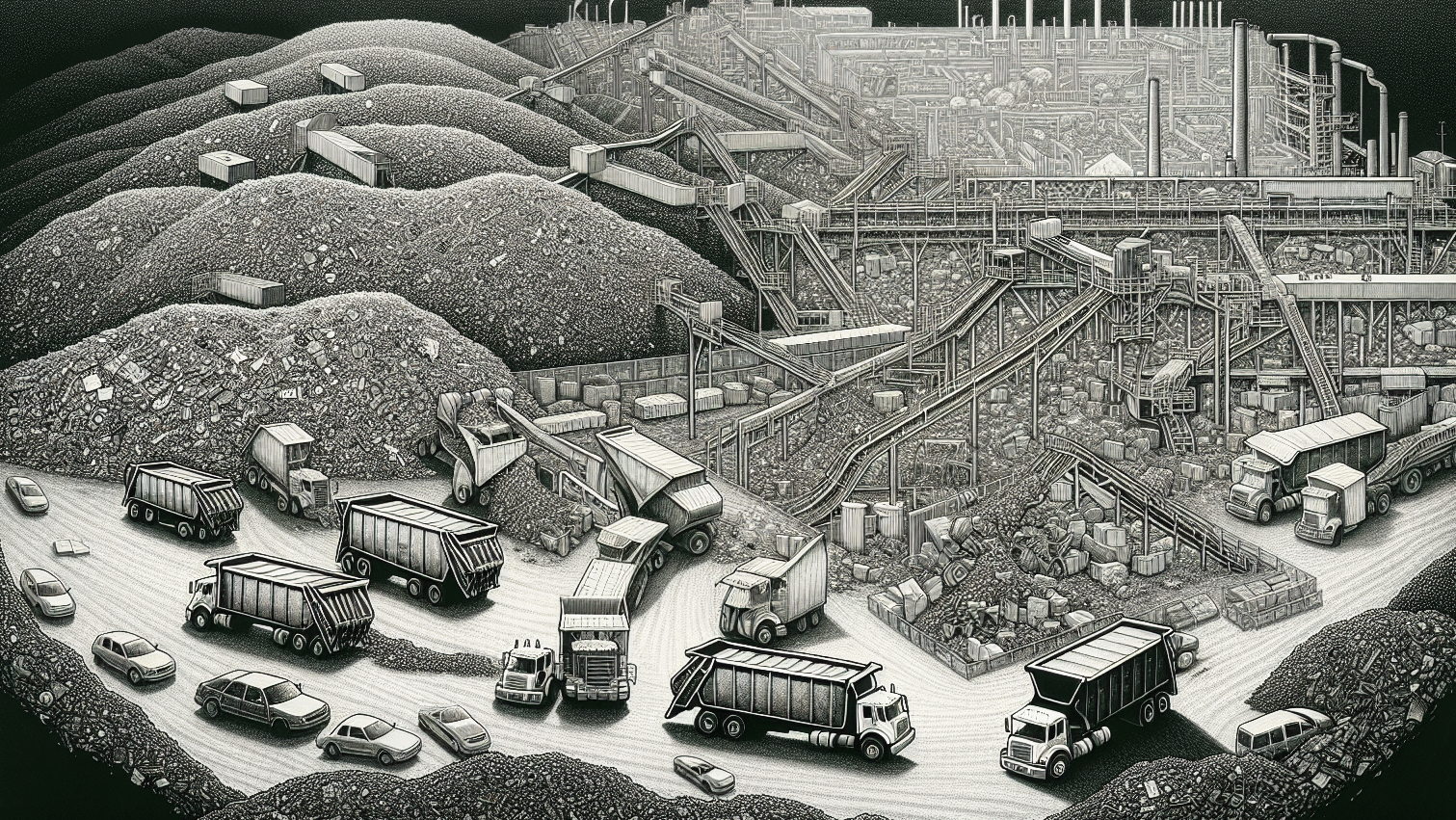Are you building or renovating? Efficient chute construction is crucial for handling waste on your site. Learn the ropes on selecting the right chutes, safe installation practices, and ensuring they’re up to code—all aimed at keeping your site running smoothly.
Key Takeaways
- Selecting the appropriate debris chute material (HDPE or steel) based on the type of debris and project needs is critical for efficient waste management and maintaining safety on construction sites.
- Proper debris chute installation and adherence to safety regulations, such as OSHA requirements, are important for efficient and safe operations, while temporary and customizable chute systems offer flexibility for diverse project requirements.
- Utilizing durable materials like HDPE and steel for construction chutes ensures long-lasting performance, and integrating professional scaffolding solutions can enhance the stability and safety of the debris disposal process.
The Essentials of Chutes Construction
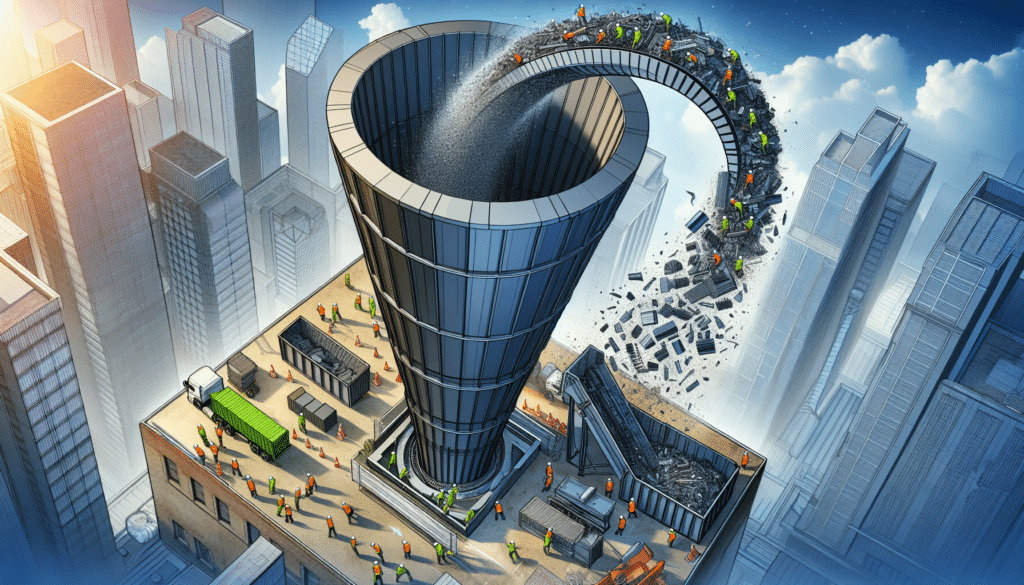
Optimizing your project’s debris management starts with grasping the essentials of chute construction. A well-constructed debris chute system is indispensable for safely and efficiently disposing of waste from elevated sites, ensuring cleanliness and effective waste management. Components such as Bolt-down Frames, Chute Hoists, and Chute Sections are integral to the structure and function of these systems. Ensuring proper installation and adherence to safety regulations further enhances their utility.
Choosing the Right Debris Chute
Selecting the right debris chute system is pivotal to managing construction debris effectively. The decision often hinges on the type of debris and the specific needs of your job site. For instance, high-density polyethylene (HDPE) chutes are lightweight and excellent for managing light to medium trash, making them a versatile choice for many projects. However, steel chutes are more suitable for multi-story buildings or when dealing with heavy debris due to their durability and ability to withstand high impact from greater heights. Whether the debris is sharp, heavy, or bulky can also influence the choice between plastic and steel chutes.
As evidenced by our experience, using the appropriate chute for the job can significantly improve efficiency. For instance, during a large-scale renovation project, opting for steel chutes to handle heavy and sharp debris maintained smooth operations and minimized the risk of chute damage.
Conversely, for a smaller residential project, HDPE chutes proved to be cost-effective and easy to maneuver, demonstrating the importance of tailoring the chute system to the specific demands of your project.
Installation Best Practices
To ensure their functionality and safety, trash chutes must be installed appropriately. Here are some key factors to consider:
- A tight fit between chute sections is essential to maintain stability and minimize the escape of dust and debris during construction.
- Adequate support is another critical factor; using winches to elevate chutes securely to higher levels ensures they remain stable and functional.
- Additional frameworks may be required to support the structure against the building for larger chutes, whereas smaller chutes can often be directly attached.
Our practice has shown that following these guidelines not only boosts the efficiency of debris disposal but also substantially cuts down on potential dangers. For example, in a high-rise construction project, using winches to securely elevate the chutes and additional frameworks for support ensured the chutes remained intact and functional throughout the project duration. This meticulous approach to installation can save time and prevent costly disruptions caused by chute failures.
Compliance and Safety Measures
Compliance and safety measures must be upheld as a top priority when using debris chutes. OSHA regulations mandate the use of guard rails around chute openings and require that chute gateways under 48 inches high be kept closed when not in use to prevent accidents. Utilizing a 26 debris chute and other demolition trash chutes enhances job site safety by directing debris away from workers, thus minimizing the danger of falling debris.
Adhering strictly to these regulations in our projects has promoted not only compliance but also a safer working environment. For instance, during a major demolition project, installing guard rails and ensuring chute gateways were closed when not in use significantly reduced the risk of accidents. Such measures are essential for maintaining a safe and efficient job site, ultimately contributing to the overall success of the construction project.
Innovative Debris Management Solutions
Innovative debris management solutions are revolutionizing construction site efficiency. Some of these solutions include:
- Advanced chute systems that provide a direct and enclosed pathway for debris, promoting safety and improving overall site operations
- Temporary trash chutes that can be easily installed and removed as needed
- Customizable chute systems that can be tailored to fit the specific requirements of a project
- Cost-effective trash removal strategies that offer efficient and affordable options for debris disposal
These versatile options suit various project needs and help streamline lightweight construction site operations.
Temporary Trash Chute Advantages
Temporary construction trash chutes bring numerous advantages to construction sites, including:
- Minimizing the risk of injuries related to carrying debris down from higher levels, resulting in fewer worker compensation claims
- Significantly improving site organization by containing and directing waste disposal, contributing to cleaner work areas, and potentially higher worker productivity
- Saving time and labor, particularly when handling light debris such as plaster or drywall
One should note that while temporary trash chutes are relatively straightforward to install and remove, these processes might necessitate extra manpower, potentially affecting their overall cost-effectiveness for larger projects. Despite this, their benefits in terms of safety and efficiency often outweigh these minor inconveniences, making them a valuable addition to any construction site.
Customizable Chute Systems
Customizable chute systems offer a flexible solution for diverse construction projects. These systems can be adjusted in length and diameter, and their modular designs facilitate quick modifications and reconfigurations to accommodate a project’s evolving needs. For example, specialized features such as stainless steel intake doors make these systems versatile for different environments.
Our experience has shown that using customizable chute systems is particularly beneficial, especially in complex demolition projects. Some of the benefits of using customizable chute systems include:
- Effective management of excessive waste
- Enhanced job site cleanliness and safety
- Improved operational efficiency
- Alignment with the specific requirements of each unique project
Cost-Effective Trash Removal Strategies
Implementing cost-effective trash removal strategies is vital to maintaining budgetary constraints while ensuring efficient waste management. Renting a temporary construction chute is often more economical than purchasing one, with rental prices varying based on the project’s duration and size. Companies may also offer discounts for extended rentals or bulk orders, providing significant cost savings for larger projects.
Outsourcing the loading, hauling, and disposal of construction waste to a professional firm can further reduce costs related to:
- wages
- fuel
- disposal fees
- time lost
These strategies have consistently demonstrated their effectiveness in our projects, enabling us to manage budgets without sacrificing either efficiency or safety. For instance, renting temporary chutes and outsourcing waste management during a large-scale renovation streamlined the process and resulted in substantial cost savings.
Durable Materials for Lasting Performance
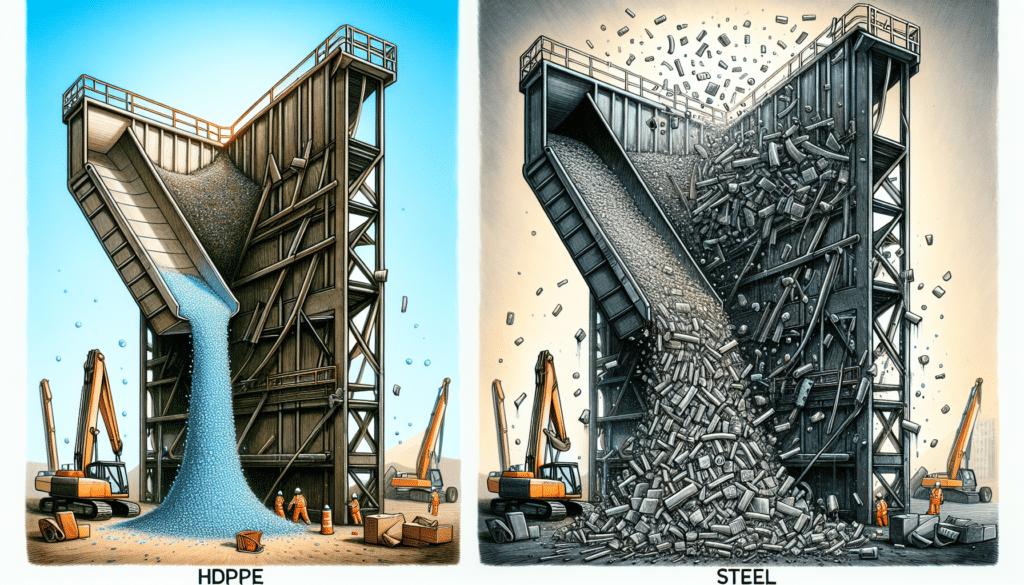
Durable materials are essential for debris chutes’ lasting performance. Constructs made from high-density polyethylene (HDPE), aluminum, or steel offer strength, resistance to abrasion, and high-temperature endurance. Choosing the right material based on the project’s demands can ensure the chute system’s stability and longevity.
High-Density Polyethylene (HDPE) Chutes
HDPE chutes are a popular choice in construction due to their:
- Lightweight and durable nature
- UV stabilization, which enhances longevity by preventing degradation from sunlight exposure
- Balance of resilience and efficiency, making it a preferred material for construction chutes
- Low moisture absorption, minimizing bacterial growth, and preventing odor
These qualities contribute to the hygiene and maintenance of construction chutes.
Our findings indicate that HDPE chutes, which are easy to assemble and disassemble, offer a cost-effective and labor-saving solution for debris management. For instance, during a residential renovation project, using HDPE chutes streamlined the waste disposal process, enhancing efficiency and cleanliness on site.
Heavy-Duty Steel Chutes for Robust Needs
Heavy-duty steel chutes are ideal for projects requiring robust and reliable solutions. Their exceptional strength enables them to endure the impact of heavy debris during extensive renovation work and new construction projects. Steel chutes are particularly capable of handling the demands of high-rise construction, where material strength is crucial.
Steel chutes’ durability assures their reliability in harsh construction environments, outperforming less robust materials. For example, in a high-rise building project, steel chutes efficiently manage the heavy debris, maintaining stability and functionality throughout the construction period.
Versatile Applications Across Project Types
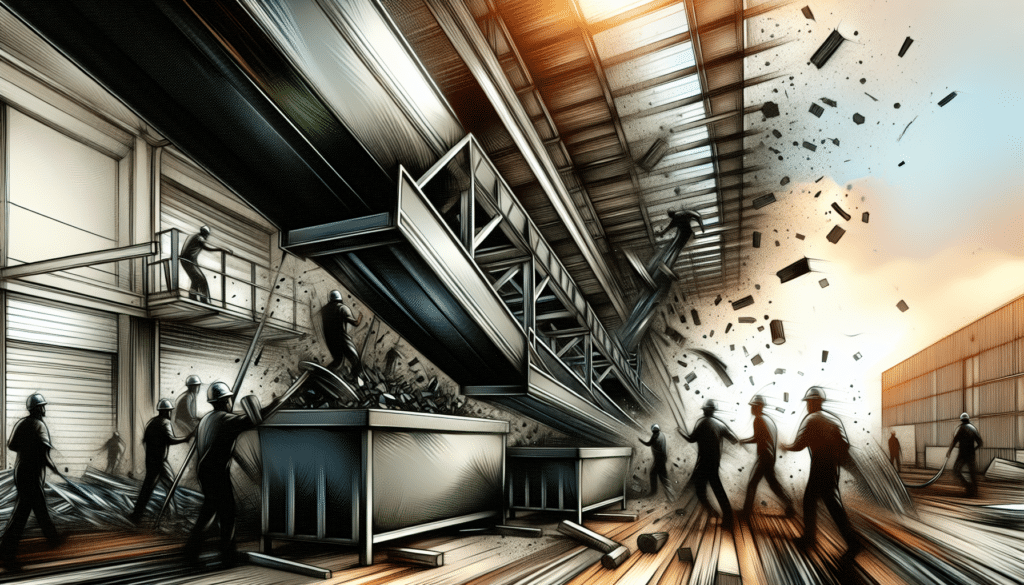
The versatility of chutes makes them suitable for various construction projects. Whether dealing with roofing or demolition, the right chute system can significantly enhance efficiency and safety during the chute opening process. By selecting the appropriate chute section, you can further optimize the performance of the chute system offered by Chutes International.
Roofing Projects Simplified
Debris chutes greatly enhance roofing projects by offering a streamlined method for discarding construction waste. This not only improves job site cleanliness but also enhances efficiency. Roofing projects benefit from the quick and safe disposal of waste materials from elevated work areas, directing debris to designated disposal sites.
The use of debris chutes has proven invaluable in our roofing projects. For instance, during a flat roof renovation, the chutes facilitated a smooth and efficient waste disposal process, keeping the site clean and organized and ultimately speeding up project completion.
Demolition Made Safer
Demolition or demo chutes are integral to maintaining safety on demolition sites. They ensure a controlled debris descent, significantly reducing the risk of injuries and enhancing overall safety. The implementation of a demolition slide improves efficiency by allowing for rapid and secure debris removal during the demolition process.
The use of demo chutes has revolutionized the process of our demolition projects. For instance, during the demolition of an old industrial building, the chutes effectively managed heavy debris, maintaining a safe and efficient work environment. This not only protected our workers but also streamlined the entire demolition process, ensuring timely project completion.
Streamlined Operations with Professional Scaffolding Integration
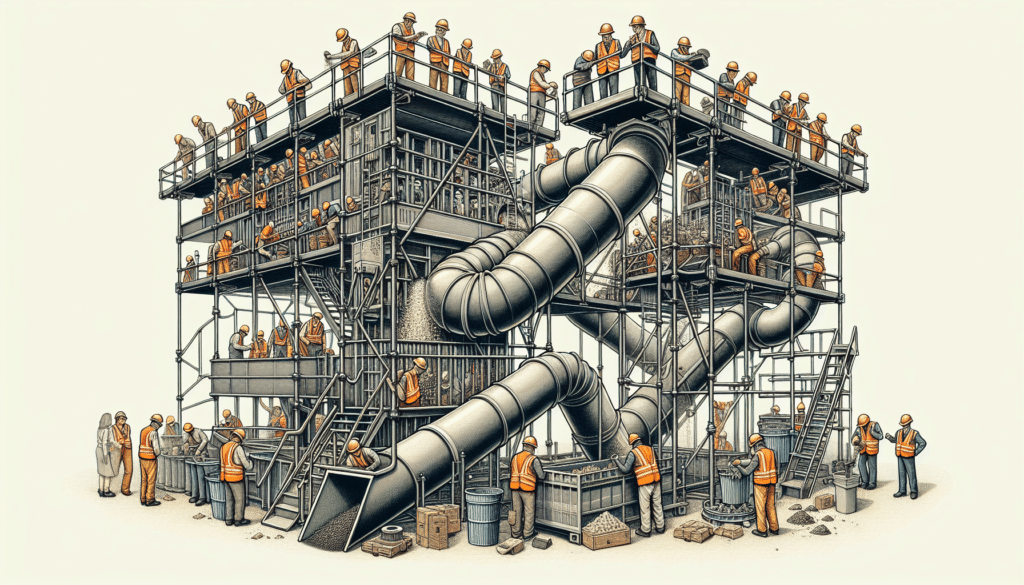
Integrating professional scaffolding with trash chutes is a game changer for construction site logistics. Certified companies offering scaffolding and chute integration services prioritize safety and service quality while catering to their customer’s diverse needs.
Scaffolding Solutions for Chute Support
Scaffolding provides a secure structure, ensuring that chutes for disposing of construction debris are safely managed during building or renovation projects. It creates strong anchorage points for debris chutes when direct attachment to the building is not an option, ensuring stability throughout the construction activities. For instance, in a high-rise building project where attaching chutes directly to the structure was unfeasible, scaffolding provided the necessary support, thereby maintaining the efficiency and safety of debris disposal.
Additionally, scaffolding offers a customizable support system for trash chutes, accommodating diverse project scopes from small to high-rise building constructions. These solutions are available in plastic and steel, with steel being particularly effective for heavy debris and large-scale projects. This flexibility ensures that the right support system is used for each specific project, enhancing overall site operations.
Full-Service Approach
A comprehensive approach to trash chute systems, which includes creating, installing, and disassembling chutes, provides a complete solution for construction projects. Custom trash chute systems are tailored to meet the unique needs of each construction project, ensuring that every aspect of debris management is covered, including using a disposal chute. For instance, a custom-designed chute system facilitated efficient waste management in a complex renovation project, from setup to teardown, without disrupting the workflow.
The full-service offering includes scaffolding integration that supports the trash chute system throughout construction. Personnel working with trash chute and scaffolding setups receive specialized training to ensure a safe and secure work environment. This comprehensive approach not only streamlines operations but also enhances the safety and efficiency of the construction site.
Summary
In summary, the integration of streamlined chute construction significantly enhances efficiency and safety on job sites. Each step is crucial in optimizing debris management, from selecting the right debris chute system to ensuring proper installation and adherence to safety measures. Innovative solutions such as temporary trash chutes, customizable chute systems, and cost-effective trash removal strategies offer versatile options to suit various project needs.
Durable materials like HDPE and steel ensure the longevity and reliability of chute systems, while professional scaffolding integration provides the necessary support for these systems. By adopting these best practices and solutions, construction projects can achieve cleaner, safer, and more efficient job sites, ultimately contributing to successful project completion. Embrace these advancements and transform your debris management approach today.
Frequently Asked Questions
What are the main components of a debris chute system?
The main components of a debris chute system typically include Bolt-down Frames, Chute Hoists, and Chute Sections. These components are integral to the chute’s construction and function.
How do I choose the right debris chute for my project?
When choosing a debris chute, consider factors such as the type of debris and job site requirements. HDPE chutes are suitable for light to medium trash, while steel chutes are ideal for heavy debris and multi-story buildings.
What are the best practices for installing trash chutes?
When installing trash chutes, it is important to ensure a tight fit between chute sections and provide adequate support. For larger chutes, additional frameworks may be needed to support them against the building.
What safety measures should be taken when using debris chutes?
Make sure to adhere to OSHA regulations, such as using guard rails and keeping chute gateways closed when not in use, to enhance job site safety and direct debris away from workers.
How can scaffolding support trash chutes on a construction site?
Scaffolding can support trash chutes by providing a stable and secure structure with strong anchorage points and customizable support systems, ensuring stability and safety during construction activities.
